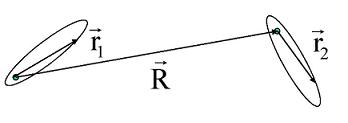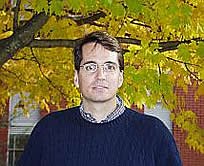 |
Prof. Francis RobicheauxI've been a
professor of physics at Purdue University since 2013 (previously at
Auburn University 1993-2013). My research area is Theoretical Atomic
Physics, focusing on coherence and decoherence in quantum
systems, many body processes when photons interact with many atoms,
highly
excited (Rydberg) atoms, strong fields, and
ultracold plasmas. My group typically consists of undergrads,
grad students, and postdocs. I'm a member of the ALPHA collaboration:
the first group to trap the antimatter version of the Hydrogen atom and
the only group to quantitatively measure its properties.
|
|
|
Rydberg Gas The frozen Rydberg gas is an interesting new example of a correlated system. The recent focus (both experimentally and theoretically) is for Rydberg atoms in arrays which are a popular platform for quantum simulators and proposed quantum computers. This popularity is due to the possibility of the long range interaction allowing entanglement between atoms separated by more than a micron. We have performed several studies of this system. In the early days of this field, we focussed on quantum simulations of the developing entanglement by numerical solution of the Schrodinger equation with a simplified interaction between the atoms. More recently, we study methods for accurately calculating the interaction between the atoms and study decoherence processes that can lead to problems with quantum simulators and computers. Below is a brief description of results in two recent publications. Hui Yu and F. Robicheaux, "Coherent dipole transport in a small grid of Rydberg atoms," Phys. Rev. A 93, 023618 (2016). PDF (387 kB) In this paper, we studied how one or two excitations can hop through a grid of Rydberg states.We studied both 1- and 2-dimensional grids of atoms. The idea was to study how different features of the grid affected how the excitation(s) hopped. For example, corners and edges strongly affected the hopping. As another example, if the excitation is on two sites and there is a phase difference, the value of the phase difference will affect the direction the excitation moves. Other cases were examined. We also showed how to define a current for the excitation as it hopped through the grid. F. Robicheaux and N.M. Gill, "Effect of random positions for coherent dipole transport," Phys. Rev. A 89, 053429 (2014). PDF (831 kB) In this calculation, we studied how the random positions for a gas of Rydberg atoms would affect the hopping of an exciton due to the dipole-dipole interaction. This system should show effects like Anderson localization. Five Recent
Publications
F. Robicheaux, T.M. Graham, and M. Saffman, “Photon-recoil and laser-focusing limits to Rydberg gate fidelity,” Phys. Rev. A 103, 022424 (2021). PDF (642 kB) (data for figures at https://doi.org/10.4231/B7CM-VP26) F. Robicheaux, “Calculations of long range interactions for 87Sr Rydberg states,” J. Phys. B 52, 244001 (2019). F. Robicheaux, D.W. Booth, and M. Saffman, "Theory of long-range interactions for Rydberg states attached to hyperfine-split cores," Phys. Rev. A 97, 022508 (2018). PDF (678 kB) F. Robicheaux, M.M. Goforth, and M.A. Phillips, "Simulation of prompt many-body ionization in a frozen Rydberg gas," Phys. Rev. A 90, 022712 (2014). PDF (254 kB) S. Zhang, F. Robicheaux, and M. Saffman, "Magic-wavelength optical traps for Rydberg atoms," Phys. Rev. A 84, 043408 (2011). PDF (820 kB) |
robichf[at]purdue.edu Links: |
